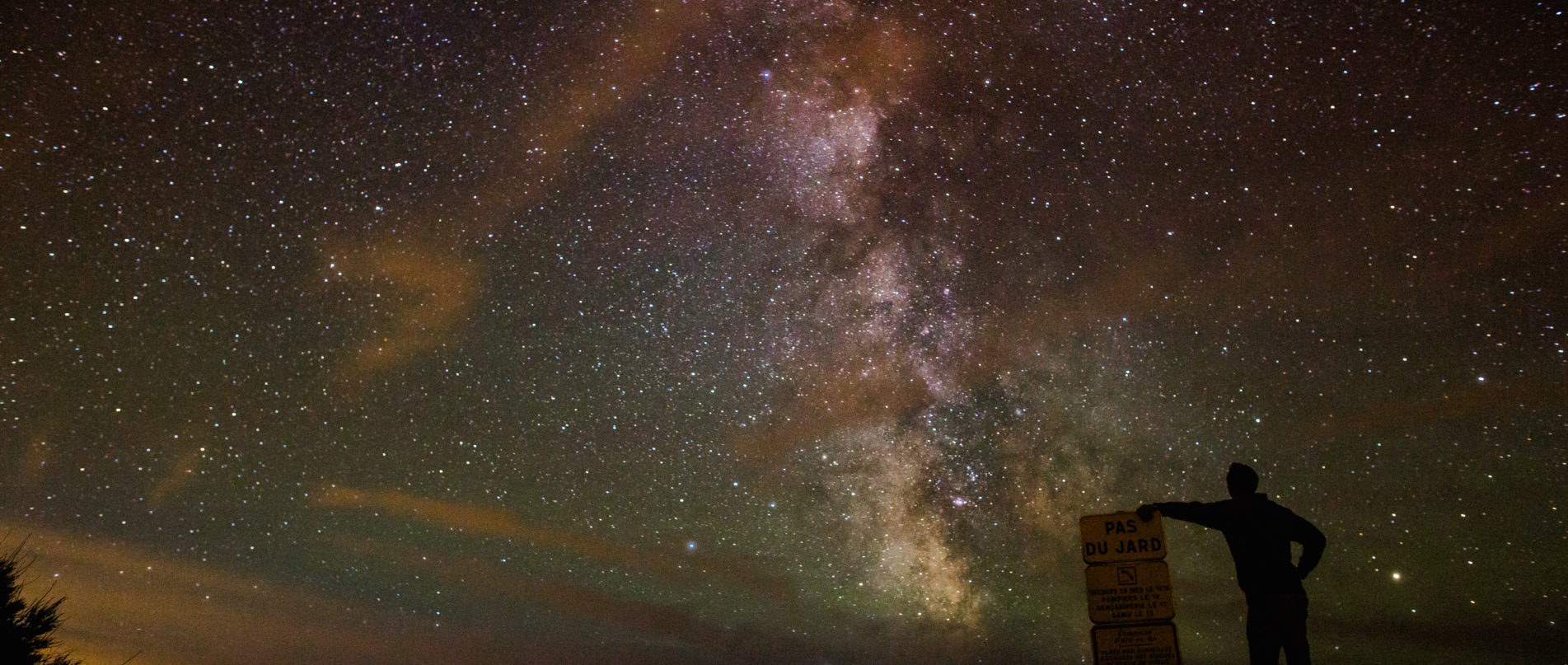
Prompt Images
Note: This is the second part in a two-part series. If you haven’t read it already, go ahead and start with part one here.
[1] The Energy Addiction
So, where were we? Oh yes, I was explaining that real astronomers, with actual degrees at reputable Universities, after puzzling over bizarre changes in the observed brightness of a star (KIC 8462852 AKA the WTF Star), are hypothesizing that said observations could be explained by the presence of Alien Megastructures around this star. In Part I, we covered the Aliens. Now we can finally turn to the Megastructures.
The best way to wrap your head around the idea of a megastructure, the kind that is large enough to dim a star, is to take a step back and look at how life behaves at the largest scales. Because at the largest scales, both in space and in time, life is really just a machine for consuming ever increasing amounts of energy to stave off its own decay.
Recall from the physics high school class that you probably slept through that there are a few universal rules that apply to all physical systems (atoms, people, cars, ducks, etc.): energy is always conserved and entropy is always increasing. Energy we mostly get intuitively. Entropy is a little trickier, but for our purposes we can think of it as disorder. The exact definition of entropy is more nuanced than that, but again, you slept through physics so what the hell do you care?
OK, so energy is never lost; it only gets converted into different forms. Your body is constantly converting chemical energy that is stored in food like bananas and Fruity Pebbles into kinetic energy that allows your legs to move and your heart to pump. Cars do the same but they use fossil fuels instead of Fruity Pebbles.
Now entropy wants to make all systems more disordered. So, your room gets more cluttered, your car breaks down, and, if you are Mel Gibson, at some point your career does a swan dive. But, and this is a very big BUT, you can use energy to stave off entropy. You can use energy to fight the law of physics that causes things to get more and more disordered. For example, you can use that Fruity Pebble energy to keep picking up dirty clothes in order to keep your room clean. Or to keep your car working and rust free. Or to do The Expendables 3, if you are Mel.
But make no mistake – entropy will win in the long run. You won’t always be around to clean your bedroom, and once you are gone it is going to end up looking like this:

Resistance is futile.
But in the short term you can hold entropy at bay.
The more complicated the system, though, the more energy it will take to keep things status quo. If you are a simple-ass amoeba, it won’t take that much energy to keep your flagellum from falling off. If, on the other hand, you are something uber complicated like New York City, you need an absurd amount of energy to keep entropy from turning you into, say, Camden.
So at the grandest scales, the history of life (which is way more complicated than not-life), is one of gobbling up larger and larger sources of energy to maintain our swanky multi-cellular/multi-national/multi-cultural lifestyle. We may ultimately fail in our war against entropy, but dammit if we aren’t going to enjoy Bonchon and Game of Thrones while we are still here.
Every other species has to consume energy to stay afloat too, but of course, as with all things, humans take consuming energy to a whole new level. Because we aren’t just a bunch of bonobos sitting around doing nothing all day – we organize ourselves and build cities and roads and an uncountable number of phallic shaped monuments. We don’t just need energy, we need embarrassing quantities of the stuff.
Thus we discovered fire and leveled forests. We discovered coal and leveled mountains. We discovered oil and leveled countries. On this view, the history of our species is not about the heroic monkey-people who created a world of meaning for themselves. No, ours is the history of an addict taking more and more hits of that sweet, sweet energy just to keep from sliding back into the pool of ooze we crawled out from.
But what does this have to do with aliens? Let me show you.
[2] The Fix
Now, if you belong to an alien civilization that has been around for a while, maybe a few thousand years longer than humans, perhaps you converted to green energy long ago, having already burned through any fossil fuels that may have been lying around on your planet.
But even green energy, gathered from a planet, has its limits. On Earth, for instance, there is actually a finite number of wind turbines you can build before you’ve sucked up all the energy the atmosphere has to offer. And there’s only so much space on a planet’s surface for collecting solar energy.
Maybe your alien society sends up some satellites with gigantic solar panels to sop up more of that wonderful light. But before long, you have filled up the whole sky. Then it occurs to you. Why not build a gigantic solar panel, or more feasibly, a gigantic swarm of solar panels that orbit around your neighboring star? Do you know how much more space there is around a star as compared to on the surface of the planets orbiting that star?
So like the Onceler of The Lorax fame you just keep on
Biggering and
Biggering and
Biggering and
Biggering.

And suddenly, before you know it, your civilization has built itself a Dyson Sphere, a term coined by the physicist Freeman Dyson in the 1960s to describe a structure surrounding part or all of a star in an attempt to leave no photon behind.

Yes, ladies and gentlemen – this is what a real megastructure looks like. Now that is the kind of thing could cause a star to appear dimmer.
Timeout, some of you may be thinking. We trusted Enrico Fermi enough to believe that aliens are maybe a thing. But now you want us to believe that said aliens are capable of making a gigantic Snuggie for a star?
I admit, it is a lot. After all, do we really think humans here on Earth, the species that elected Ted Cruz to the Senate and thinks the Kardashians are worth a trillion hours of our collective attention span, could do something like that? And if not us, why should we think Mork and his crew would fare any better? I’m not even convinced that this guy has opposable thumbs with which to operate the necessary megastructure manufacturing machinery:

I’ll admit, a megastructure like a Dyson Sphere is a tall order. But if you consider that until the 1960s, when the first satellite was launched by the Russians, the space around earth looked like this:

And just 50 or so years later that same space looks like this:

…suddenly a Dyson Sphere doesn’t seem entirely impossible.
We launched all those satellites in our never-ending effort to obtain improved traffic directions. You think we won’t do the same to our neighboring star when the option of sticking an IV of pure sunlight into our veins is on the table? Of course we will. I can’t tell you how we will do it. But assuming we last long enough to invent the required technology, we will do it. We have to. Because, screw entropy.
And, more to the point, aliens that have been in existence longer than humans may already have done it.
[3] Of Stars and Megastructures
Now let’s suppose you are an astronomer who believes alien life likely exists somewhere out there, and you also believe that any advanced civilization would be wise enough to try and build itself some kind of gigantic sunlight sucking megastructure. And imagine someone sticks those light curves from KIC 8462852 in front of you.
All the ‘normal’ explanations that could explain the data – planets, asteroids, comets, cosmic dust – they all fail to completely account for the data. These objects aren’t big enough to cause those giant dips in brightness. Their orbits aren’t irregular enough either. But you know what could be big enough and have the desired irregular shape? Say it with me now: a megastructure. All of a sudden you have a totally rational and pragmatic astronomer thinking – well god damn, maybe we’ve finally found ‘em.
I don’t want to get your hopes up too high. As I said at the beginning, it’s probably not aliens. Science is like soccer – so many teases, but so few actual goals scored. We are currently watching astronomers make an epic march down the field. Each pass a sight to behold. It’s happening in slow motion, over the course of years, not minutes. And as in soccer, we know that the most likely outcome is a ball sailing far over the net into the stands.
And yet – if these astronomers were, against all odds, to actually score a goal? What if over the next few months or years or decades the astronomers figure out a way to demonstrate, beyond all reasonable doubt, that KIC 8462852 is home to an advanced civilization with their very own Dyson Sphere?
What happens then?
I have no idea what happens. But just the spectre of it is absolutely thrilling.



